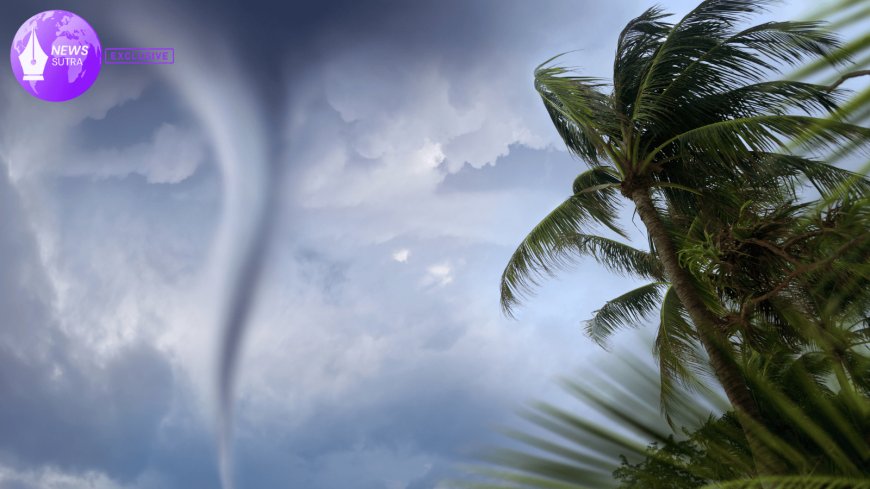Bracing for Impact: How Underserved Coastal Towns Prepare for Tropical Storm Fernand
Small U.S. coastal towns brace for Tropical Storm Fernand with grassroots evacuation plans, highlighting gaps in disaster preparedness and long-term economic risks.

As Tropical Storm Fernand tracks toward the U.S. coastline, attention has largely centered on major cities with established evacuation systems and resources. But in small, underserved coastal towns from rural Florida to South Texas, the reality of preparing for a storm like Fernand looks very different. Limited infrastructure, fragile economies, and decades of underinvestment shape both the risks and the resilience strategies of these overlooked communities.
The Storm’s Path and Projected Impact
According to the National Oceanic and Atmospheric Administration (NOAA), Fernand is expected to strengthen slightly as it churns through warm Gulf waters, before making landfall along the Gulf Coast later this week. Early trajectory models highlight swaths of vulnerable coastline, including fishing towns in Florida’s Big Bend region and small border communities in Texas.
Unlike metropolitan centers with robust emergency management departments, these towns rely on grassroots efforts—local churches, volunteer fire departments, and neighborhood committees—to coordinate evacuation alerts, shelter information, and food distribution.
Life on the Frontlines of the Gulf
In Port Lavaca, Texas, residents gathered in a high school gymnasium on Wednesday night for a community-led briefing. Folding chairs were filled with families who listened as volunteer organizers shared updates from NOAA maps projected onto the wall.
“We don’t have big government resources here,” said Miguel Alvarez, a shrimp boat captain who doubles as a volunteer coordinator during storm season. “When a storm comes, it’s neighbors helping neighbors. That’s the way it’s always been.”
Mental Health and the Hidden Costs of Evacuation
While hurricanes and tropical storms often bring images of boarded-up windows and sandbags, psychologists note that the quieter mental health toll can last long after the waters recede. Dr. Karen White, a trauma psychologist from Galveston, explained:
“Survivors of smaller, underserved towns often experience higher stress and anxiety because they lack assurance of institutional support. The uncertainty around food, income, and housing stability compounds the trauma.”
Families living paycheck to paycheck often weigh the cost of evacuating against the risk of staying. Gasoline shortages, lost wages, and even pet accommodations can make evacuation an economic impossibility for some.
Economic Forecasts for Fragile Communities
Beyond the immediate danger, Fernand’s potential landfall is expected to ripple through local economies dependent on fishing, agriculture, and seasonal tourism. In Apalachicola, Florida—a small town known for its oyster industry—residents worry the storm surge will further erode the delicate coastal ecosystem.
“This isn’t just about one storm,” said Laura Jenkins, a seafood market owner. “Each time we rebuild, we’re starting from further behind. Insurance rates climb, supplies cost more, and fewer people come back to visit. It wears you down.”
The Federal Emergency Management Agency (FEMA) has pledged to monitor Fernand closely, but officials acknowledge that resource allocation is always a balancing act. Large metropolitan evacuations often consume the majority of federal focus, leaving smaller communities to fend for themselves during the critical first hours after impact.
Grassroots Evacuation Efforts
Grassroots networks in these towns are proving essential. In Cedar Key, Florida, local volunteers mapped out evacuation routes using GIS-based tools on borrowed laptops. Hand-drawn flyers were posted in grocery stores and laundromats—an old-fashioned but effective method in towns where internet service is patchy.
“We can’t assume everyone has a smartphone or social media,” said volunteer coordinator Denise Ramos. “So we go back to basics: word of mouth, church announcements, and good old posters.”
A Storm That Tests National Priorities
Tropical Storm Fernand is more than a weather event—it’s a stress test for America’s uneven disaster response system. While satellite images and interactive storm trackers dominate national headlines, the quiet reality of rural resilience reveals how gaps in policy play out at the community level.
As Dr. White summarized:
“Fernand will come and go. But the deeper question is whether we’re willing to invest in long-term preparedness for the people who live in places that aren’t usually on the map—until disaster strikes.”
For these coastal towns, the storm’s arrival is not only about surviving the winds and rain, but about preserving ways of life that have long been left on the margins of national attention.











